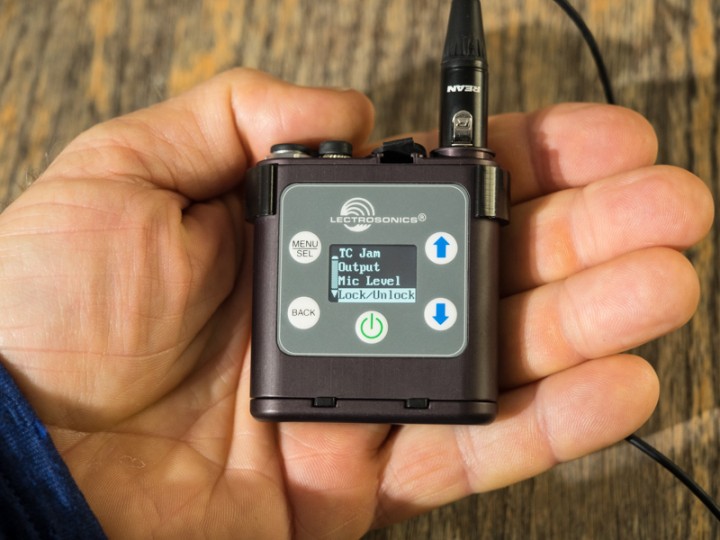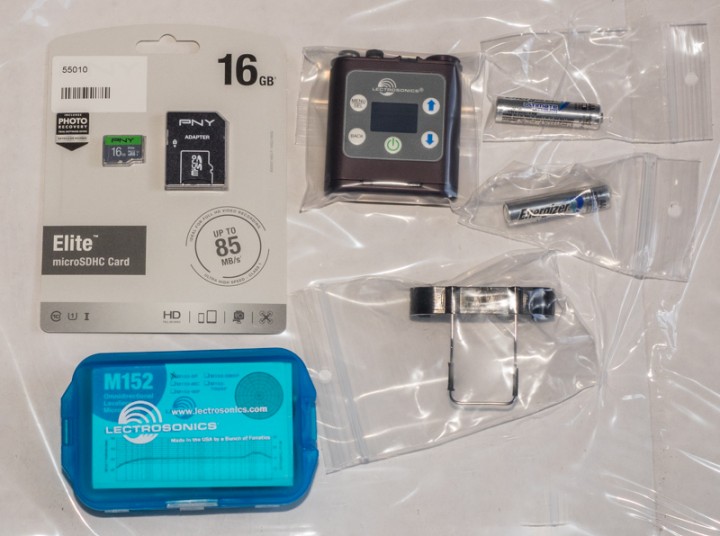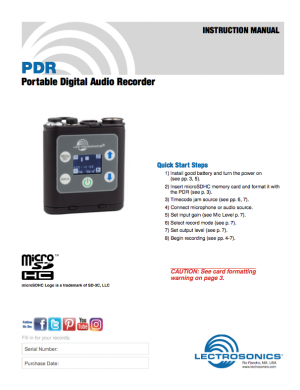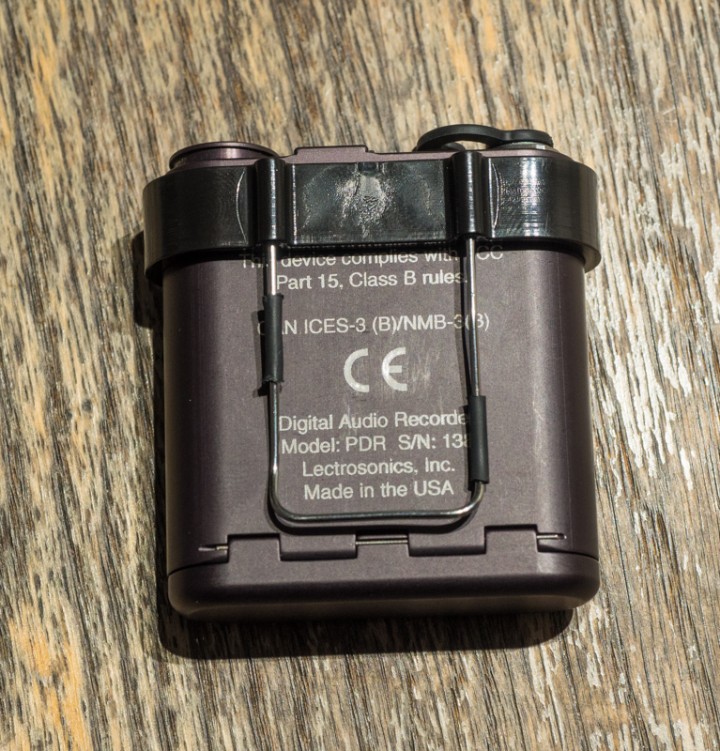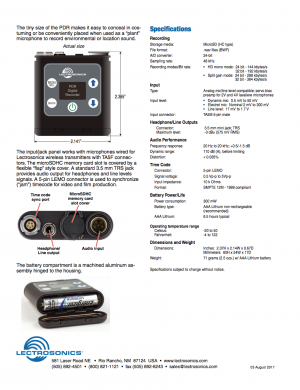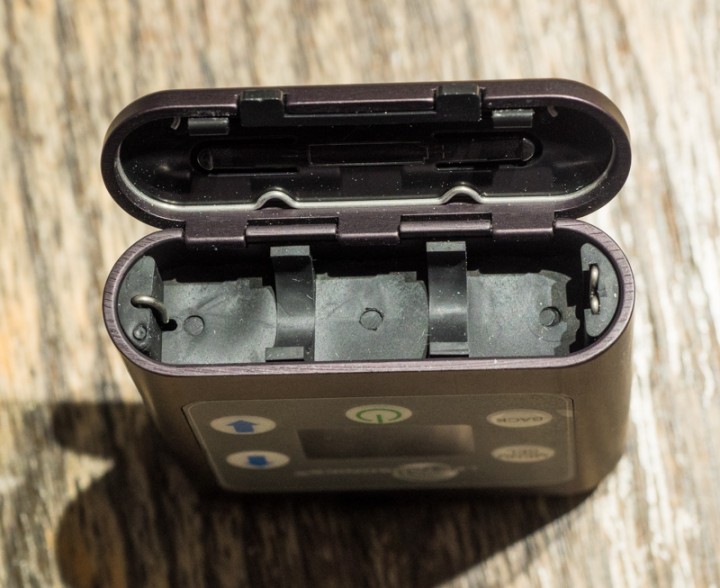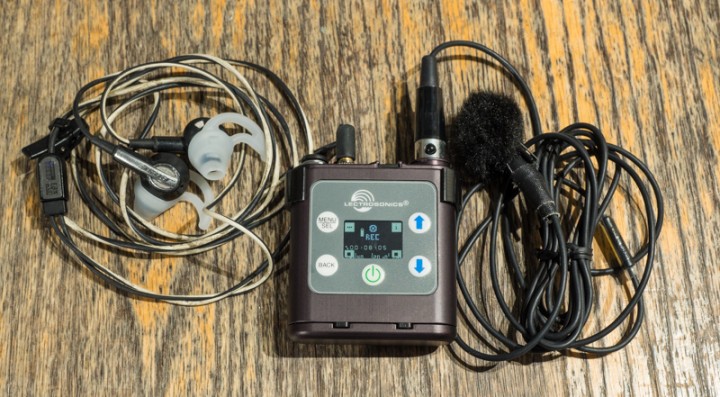Paul Cronin is a long-time DVi forum member. Lectrosonics is a DVi sponsor. We put the two together here.
I am not a sound engineer, or a dedicated sound guy. Mostly I am a one-man show. When I work with a crew, I am still recording in-camera audio. Also I have experience running soundboards for live bands, and recording interviews and music in my studio, so I know what sounds good to me. I work hard to keep my clients happy. If they think about the audio, I did not do my job well. So for me buying the best tools for the job, and knowing how to use them properly, is very important.
When I have wireless audio problems and going wired is not possible, I need a recorder. That’s what led me to check out the Lectrosonics PDR (Portable Digital Recorder). I’ve owned digital recorders that produce nice audio, but their bulky size and cumbersome menus made me sell them pretty quickly. The PDR’s features seemed to fit my needs, and thanks to Chris Hurd from DV Info Net and Karl Winkier from Lectrosonics, I had the opportunity to check it out.
In 2008 I switched to Lectrosonics, and recently I upgraded to the LR/LT. My lavalier mics of choice are the Saken COS-11D, though I did use Countryman B6 for a short while. For this test I used one of my Saken COS-11Ds.
Opening the box reveals Lectrosonics’ well thought out packaging. The PDR comes with a 16GB microSD card that will give 23 hours in HD mono mode, and 11.5 hours in split gain mode (more on this shortly). Switching to a 32GB microSD card would double those times if needed. Also in the box were two lithium AAA batteries and the optional Lectrosonic M152 lavalier. You can order just the recorder from B&H, or include your choice of lavalier:
- Order from B&H: Lectrosonics PDR without mic
- Order from B&H: Lectrosonics PDR with Sanken COS-11D lav mic
- Order from B&H: Lectrosonics PDR with Countryman B6 lav mic
My first impression was that I found myself surprised at how small and light it was for a rugged aluminum body (2.4” x 2.1” x 0.7”, and just 2.5 ounces including the battery). It will run on one AAA lithium battery for six and a half hours. Impressive specifications for a package that takes up less room then the twelve AA batteries I travel with for my LR/LT system.
For this test I used the supplied battery. Usually I use Powerex rechargeable batteries. Lectrosonics does not recommend rechargeable batteries, but I have used them on all my Lectro gear without a problem.
The Quick Start Guide had me up and running in five minutes. Yes, I’m familiar with Lectrosonics menus, but it is so simple and well laid out that anyone can dive right in.At first I thought a screen bigger than .75” x .5” would be nice, but after a few minutes I stopped thinking about screen size and found it easy to see. The five buttons are far enough apart that my large fingers had no problem. The positive click on each button is a great Lectro touch.
I couldn’t test the time code sync port because I didn’t have a compatible camera with me. This is a feature I will use often, so when I buy my PDR I will update this review.
You can choose headphones or line out, with recording bit depths of 24-bit and 32-bit. I did all my recordings in 24-bit, which are the same circuits as the SM and LT units. The audio is really clean with the 30 db of limiting. According to Lectrosonics (32-bit is actually 24-bit padded with zeros, so more space is taken up on the card). This is for older software that will not accept 24-bit.
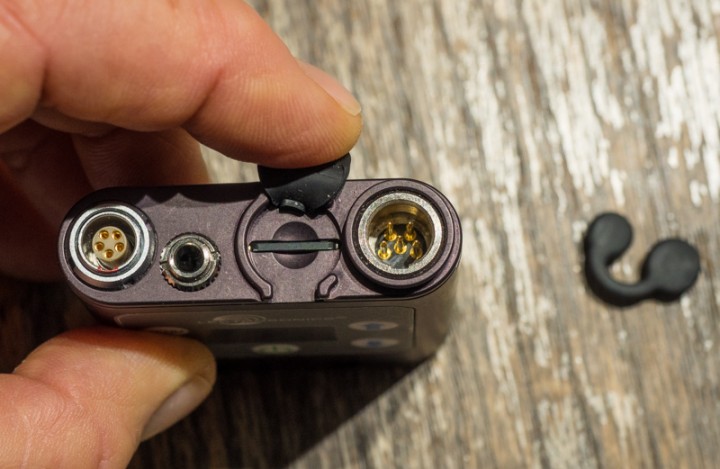
MicroSd card slot and jacks on the top of the PDR (the object to the right is the rubber Phones / TC sync jack cover).
While installing the Saken and my Bose ear buds, the headphone/time code cover came off. This would be easy to lose on a shoot, so it would be nice to have this attached to the PDR, similar to the micro SD card cover.
The belt clip was easy to install and remove. It snaps positively onto the PDR, and the clip fits tightly onto belt or clothing.
To power on and off you need to hold for a few seconds, which prevents accidental changes. On all of my Lectro units I use the lock function, so settings can’t be changed accidentally. It’s great to see the PDR has this function. The rest of the menu and buttons are pretty easy to figure out, so let’s get to performance and use.
The mic level needed to be around +24 for my setup, giving me a nice -12db output into PP CC 2017 with a very low floor noise. Since the unit is so small I could add it as a backup to the LT, with the PDR feeding a line level recording to the LT. If there was a signal problem, I’d know I had my bases covered.For one of the jobs, I added narrative while viewing the timeline. Doing clips, redoing clips, card in and card out, showed me how easy this is to use and adjust. The audio quality matches my LR/LT; I could not hear the difference.
The split gain feature lets you set the mic level and then records on a stereo track, one side at what you set, and the other at -18 db. This is a really nice feature to prevent blown out files, since you cannot monitor when the PDR is recording. I tested it by recording the drum kit in my studio, and it worked well.
I can think of many shoots where this little recorder would have saved the day. One example for me is boat to boat filming. The talent talks over an idling engine, then hits the throttles while continuing the narrative. This would be a perfect application for shooting split gain. Even if the talent powers out of wireless range, I will still be getting fantastic audio while keeping timecode.
The Lectro PDR costs is right in line with their quality and dependability, then add split gain and time code sync, I think this is a great choice. It is going to save clips for me, and I’m sure I will find a lot of other uses for this tool. That will help keep my clients from thinking about the audio.
| Lectrosonics PDR Personal Digital Recorder | |
|---|---|
| Pros: Build quality Sound quality Compact Size Split gain Time Code Sync Battery life Ease of use Quick Start Guide |
Cons: Phones / TC Sync Cover Size & Weight: 60mm x 54mm x 17mm 71g 2.3″ x 2.1″ x 0.7″ 2.5 oz. Price: appx. USD $750 |
And finally, here’s a video overview of the PDR from B&H:
Disclosure: Paul had expressed some interest in the Lectrosonics PDR on our forum. I reached out to Karl Winkler, our contact at Lectrosonics (a sponsor of this site at the time of this writing) and arranged for Paul to receive a demo unit on a two-week loan for the purposes of this review. There was no compensation from Lectrosonics, financial or otherwise, to Paul nor to DV Info Net (above and beyond the pre-existing advertising agreement between Lectrosonics and DVi). In this case, when the time came to return the demo unit to Lectrosonics, Paul decided to buy it. — Chris Hurd for DV Info Net

